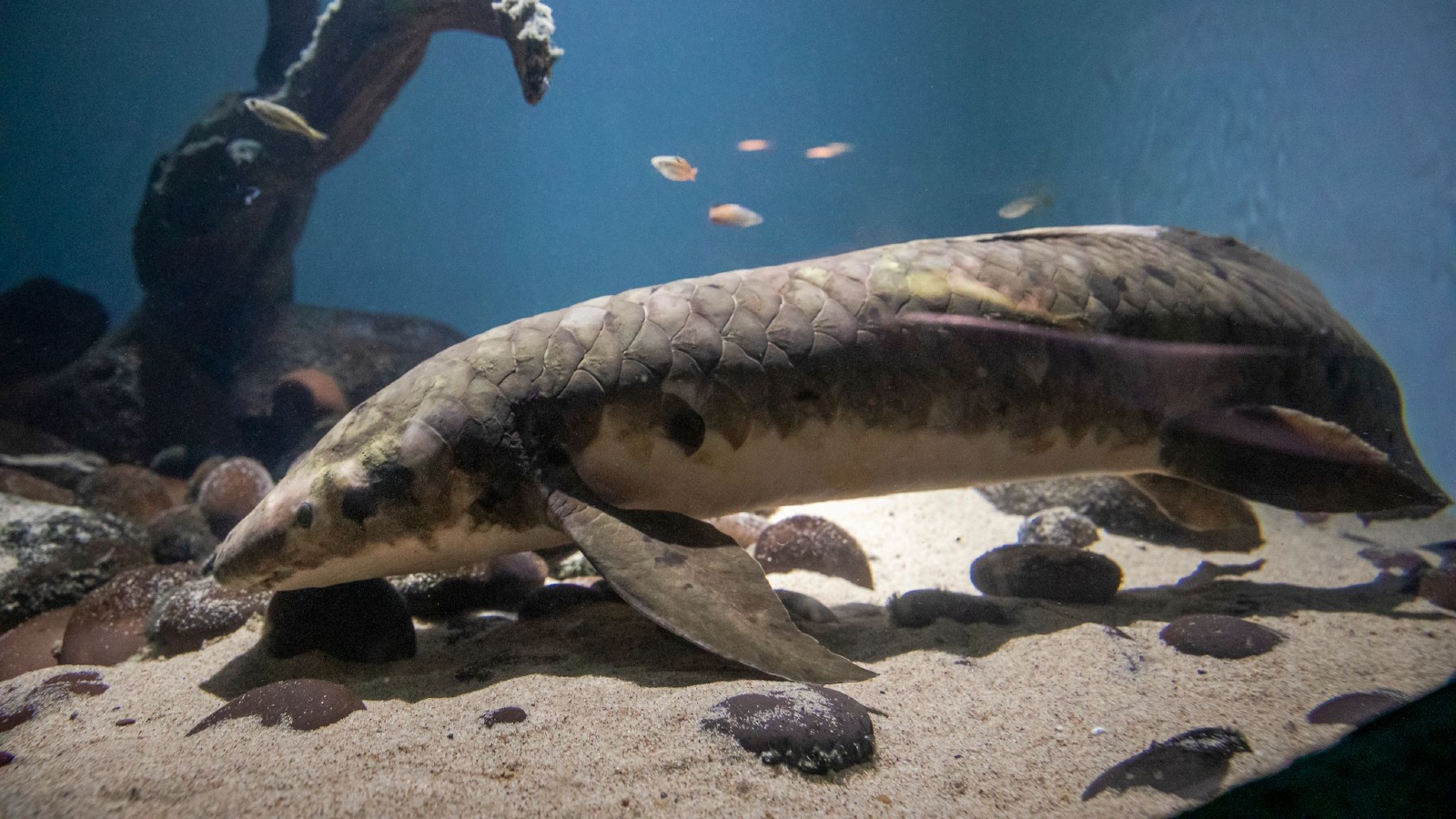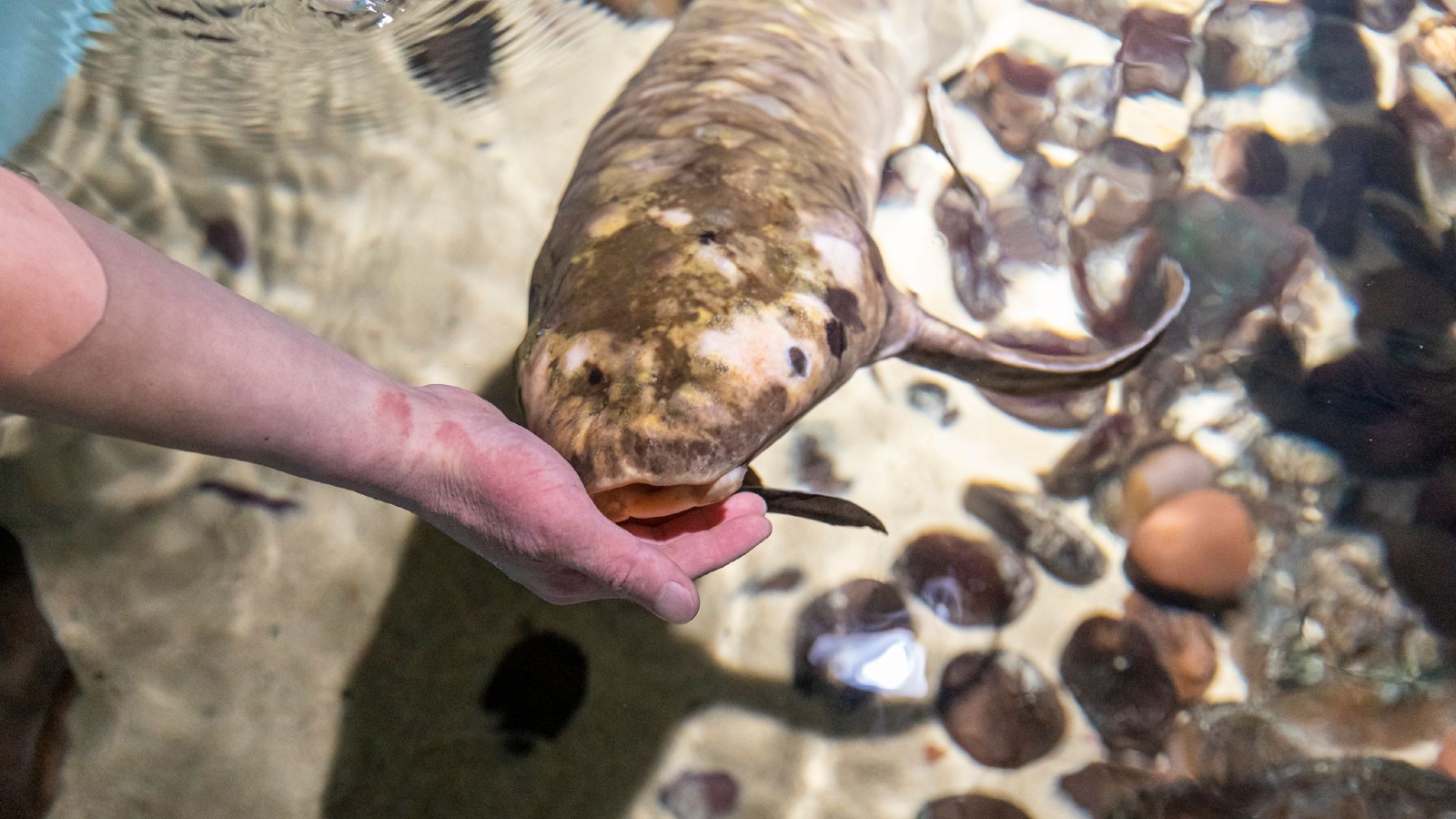World's oldest aquarium fish 'Methuselah' could be decades older than we originally thought, DNA clock reveals
A new study has found that the famous Australian lungfish Methuselah, who first arrived in the U.S. in 1938, could be up to 101 years old.
The world's oldest aquarium fish, a lungfish named Methuselah, may actually be decades older than researchers originally thought and may even be over 100 years old, a new study finds.
Methuselah is a female Australian lungfish (Neoceratodus forsteri) that resides at Steinhart Aquarium in San Francisco, California. She first arrived at the aquarium in 1938 after being sent to the U.S. along with more than 200 other fish from Fiji and Australia.
Aquarium staff have never been sure how old Methuselah is, but until now the best guess was that she is 84 years old, which makes her the oldest known fish in captivity. (In the Bible, Methuselah was a man who reputedly lived to be 969 years old.)
The elderly fish, who loves belly rubs and is hand-fed figs by her doting keepers, shows no signs of slowing down, which has added to the confusion about her age. So researchers decided to work out exactly how old she is using a "DNA age clock."
In the study, researchers compared Methuselah's DNA to the genetic material of other Australian lungfish to work out how much wear and tear her DNA had accumulated. The results suggest that she is most likely age 92, but the level of uncertainty with this type of experiment means she could be up to 101 years old. The study will be published later this year.
Related: How do fish breathe underwater?
"Although we know Methuselah came to us in the late 1930s, there was no method for determining her age at that time," Charles Delbeek, curator of aquarium projects at Steinhart Aquarium, said in a statement. It's "incredibly exciting" to have a better understanding of her actual age, he added.
Get the world’s most fascinating discoveries delivered straight to your inbox.
The researchers compared the DNA of 30 Australian lungfish from captivity and the wild, including two other lungfish at the Steinhart Aquarium. The team analyzed the amount of methylation in the fishes' genetic material. Methylation is a biological process by which methyl groups —a carbon atom bound to three hydrogen atoms — are added to the DNA molecule. From this, they were able to work out how long it would have taken for Methuselah to build up the number of methyl groups found in her DNA.
The researchers are unsure how long Methuselah could live for, but as more individuals are sampled, the DNA clock for the species will become more accurate and help unravel this mystery, study co-author David Roberts, a researcher at the Australian River Institute at Griffith University, said in the statement. But regardless of how long she will live for, there are no known lungfish older than Methuselah, he added.
Related: Do fish get thirsty?
In the wild, Australian lungfish are found exclusively in a subset of rivers in Queensland, Australia. These rivers can be extremely unstable: During dry periods, the rivers can stagnate, which reduces the level of available oxygen in the water. When breathing underwater becomes too difficult, the fish are capable of swimming to the surface and breathing air through a single lung, hence their name, according to the Australian Museum.
Lungfish are often called "living fossils" because they have remained relatively unchanged for millions of years. The oldest fossil of a lungfish from the genus Neoceratodus dates back to around 380 million years during the Devonian period (419.2 million to 358.9 million years ago), according to the Australian Museum.
However, the species' future is becoming more uncertain. Australian lungfish are threatened by human building projects, such as dams, that have altered their habitat. They are currently listed as endangered by the International Union for Conservation of Nature (IUCN) Red List of Threatened Species.
The researchers hope that the new DNA age clock can be an effective tool in helping to conserve the ancient species.
"Accurately knowing the ages of fish in a population, including the maximum age, is vital for their management," study lead author Benjamin Mayne, a molecular biologist at the Commonwealth Scientific and Industrial Research Organisation (CSIRO) in Australia, said in the statement. "This tells us just how long a species can survive and reproduce in the wild, which is critical for modeling population viability and reproductive potential for a species."

Harry is a U.K.-based senior staff writer at Live Science. He studied marine biology at the University of Exeter before training to become a journalist. He covers a wide range of topics including space exploration, planetary science, space weather, climate change, animal behavior and paleontology. His recent work on the solar maximum won "best space submission" at the 2024 Aerospace Media Awards and was shortlisted in the "top scoop" category at the NCTJ Awards for Excellence in 2023. He also writes Live Science's weekly Earth from space series.





